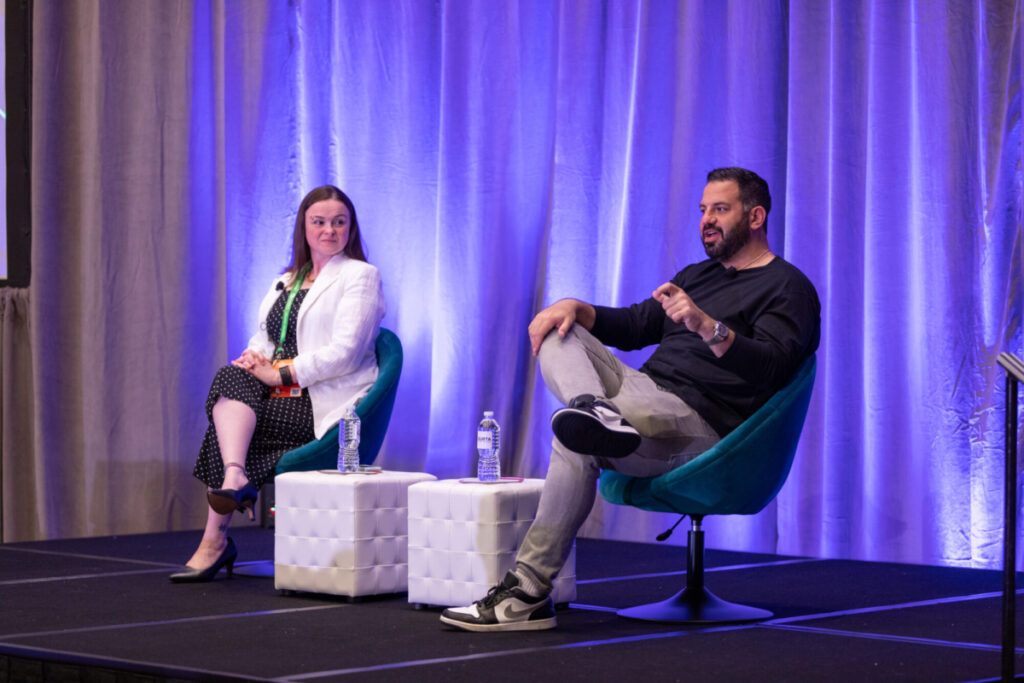The recurring payment — or subscription — model is uniquely positioned to equally benefit both businesses and their customers.

“It’s the first commerce model in the history of humankind where the relationship is baked directly into how you make money,” ProfitWell CEO Patrick Campbell said.
Implementing a subscription service within your offering enables you to engage with your customers on a deeper level and enrich their individual experiences with your products/services. It does not force you to lose or shift your brand identity, but instead empower you to enhance it.
The innovative nature of subscriptions empowered the industry to grow quickly. It is now expected to reach $275 billion by the end of 2022, according to Juniper Research. So how can you leverage recurring payments to your advantage?
Celebrate the awesomeness of subscriptions with the rest of the community on October 9!
Before You Begin: Identify Which Subscription Segment Best Fits Your Needs
Ahead of implementing the subscription model, determine which of the six segments your business belongs in. Below are three that could enrich your brand’s offering:
- Membership: Can you make your customer feel a part of a community with your brand and its products?
- Subscribe and Save: Can you incentivize your customers with a recurring discount through weekly, monthly, quarterly, or annual orders?
- Digital: Can your offering provide access to technology or other products through a digital device?
You may identify opportunities across multiple subscription segments depending on your business plan, which would put you in good company.

Amazon — a company originally created to sell books — is now one of the biggest leaders in the subscription space with its Prime membership, its subscribe and save program, and its streaming service.
The interest in the recurring payment model is increasing, as seen with Prime Video’s recent introduction of Thursday Night Football on its platform, which allegedly led to the most U.S. Prime sign ups in three hours in Amazon’s history (more than Prime Day, Cyber Monday, or Black Friday).
Amazon identified an opportunity and seized it, and you can, too. Once you know which segment(s) your subscription falls under, you can focus on expanding your target audience and nurture existing customers through an elevated offering.
1. Get to Know Your Audience on a Deeper Level
You must connect with your customers — and target audience — in order to properly market your brand.
First, identify how your product(s) serves your specific audience and tailor your marketing strategy around it.

For example, Volvo’s subscription (which was introduced in 2017), “honed in on its customers’ pain points and then gave them the solution they’d been asking for,” Erica Alfonzetti, the company’s former Head of Subscription Offers and Operations, told SUBTA.
“Subscription is a business model, not a service. People buy the solution you possess to solve their problems,” said Anthony Napolitano, GoPro’s Vice President of Subscription Services, at SubSummit 2022.
Once you’ve identified your customers’ problems and offered a solution, monitor their interactions with your brand, and pay attention to their behaviors.
“Know who your customers are and know where to find them. Listen to them, because customer service is critical in the success of your business,” said Joe Fucello of Wild Alaskan Company at SubSummit 2022.
2. Choose the Right Billing Frequency
In order to avoid product fatigue, you need to determine the best cadence for your offering, which will rely on your ability to understand how often your customers need your products/services.

If your product is not a replenishment item, empower your subscribers to decide how often they want it. Whether it’s a monthly, quarterly, or annual subscription, the more convenient your offering is, the higher your customer lifetime value (LTV) will be. And don’t be afraid to pivot when need be.
SUBTA Co-Founder and Chairman Christopher George noted during SubSummit 2022 that because of customer feedback, he changed the shipping frequency of Gentleman’s Box when he was the company’s CEO. “Always survey your customers,” he said. “They will tell you what they want and you can optimize your offering to reduce churn.”
If possible, encourage your customers to commit to your brand for more than a month at a time, as longer-term plans are more beneficial. “In consumer subscriptions,” Campbell said, “Quarterly and annual plans see about a 200% to 450% higher LTV.”
3. Establish the Right Price Point
Ensure that the price you decide to charge for your subscription has a strategy behind it.
“Consumers prefer simple price plans. If implementing rate plans, make sure they are purposeful and target a specific audience,” said David Warren of Zuora at SubSummit 2022.
Netflix, for example, is reportedly considering adding an ad-supported tier to its current offering to reach customers it had previously missed, according to the Hollywood Reporter.
4. Reimagine Your Post-Purchase Experience
One-off transactions make it harder to create a relationship with your customers since you don’t know if they’ll ever come back. The recurring payment model solves that issue by fostering loyalty and trust between your customers and your brand.

But, just because you entice someone to sign up for your subscription doesn’t mean they’ll be with you forever, which is why proactive retention needs to be as big of a focal point as your acquisition strategies.
“Become friends with customers committing to your product,” said Jing Xue of Wyze at SubSummit 2022. “Understanding why and what they need will help you give them the best experience with your brand.”
Engage with your customers once they make a purchase, suggests George. Ask them if they’re happy, mad, or sad about their experiences with your brand, and establish a trigger for each answer.
For example: A happy customer should be sent a link to share a review of the product. A mad or sad customer should be immediately transferred to your customer service department. Regardless, understanding your customer’s experience can help reduce your churn rate and increase your LTV.
Businesses that are looking to implement a subscription should ensure that their cancellation process is as clear and simple as their signup process in order to build trust with customers who don’t see a need for the subscription at the moment. “The likelihood to resubscribe goes up when it’s easier to cancel,” stated Rocket Money (formerly Truebill) CEO Haroon Mokhtarzada during his SubSummit 2022 session.
Long-Term Success With the Recurring Payment Model
By implementing the recurring payment model, businesses can become more competitive in their respective markets while also engaging with customers in a meaningful way.

According to The Business Research Company, the global subscription e-commerce market is predicted to reach over $900 billion by 2026, an increase from nearly $73 billion in 2021.
Consumer interest in the subscription model has also increased, as the amount spent on subscriptions has grown about 10% year over year (YoY), according to Mokhtarzada. In 2022 alone, nearly 70% of consumers are likely to gift a subscription during the holiday season, per an Attest survey conducted by SUBTA.
“The success of a brand is built upon the long-lasting relationships it has with its customers” said George.


